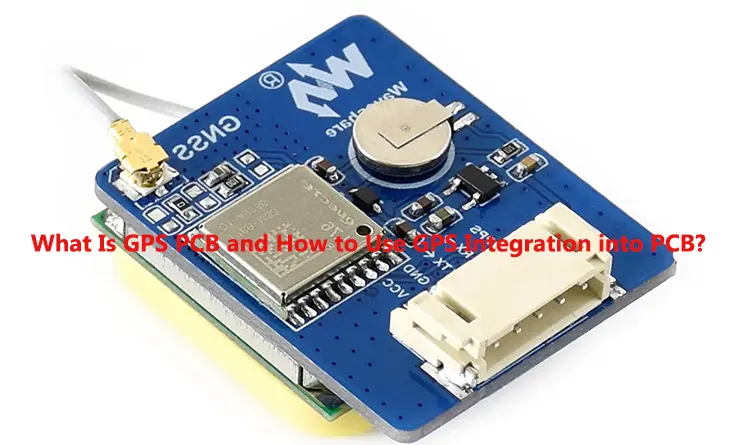
Advancements in the electronics industry have rendered long GPS navigators a thing of the past. In today’s world, individuals no longer need to rely on bulky navigation devices like their forefathers did in the past. In light of this, integrating GPS into Printed Circuit Boards (PCBs) has become an effortless task.
As of yet, instances of theft of devices that feature a PCB GPS antenna have not been reported. With this in mind, electronic manufacturers can confidently focus on incorporating GPS capabilities into their PCB designs, regardless of their level of expertise in GPS or RF design. Before proceeding with the manufacturing process, it is crucial to understand what a GPS-printed circuit board is and how to properly implement GPS integration into the PCB design.
What Is A GPS ?
GPS, an acronym for Global Positioning System, is a satellite-based navigation system that provides highly accurate real-time positioning and velocity information.
GPS has become ubiquitous and can be found in a variety of devices, including automobiles, smartphones, and wearable technology. This technology has the capability to guide users to their destination from anywhere in the world using trilateration.
GPS technology operates by computing a user’s position, velocity, and altitude. Trilateration, a method that employs satellite signals to determine a user’s location, is utilized to achieve this. Trilateration is often confused with triangulation, a method that uses angles instead of distances.
GPS receivers and decoders, located on or near the surface of the planet, receive and process signals emitted by orbiting GPS satellites. For optimal accuracy, at least four satellite signals must be gathered by the GPS receiver to obtain precise location data.
GPS Technology
Satellite-based GPS technology uses signals transmitted from orbiting satellites to determine the precise location of a user on the planet. Location data is presented in the form of GPS coordinates, which provide latitude and longitude information regarding a specific location.
● GPS PCBs: GPS technology can be utilized to provide real-time location information in systems that require it. GPS PCBs are integrated into such systems with devices featuring GPS modules to facilitate the provision of location details. The type of GNSS system used on the board determines whether a GPS PCB antenna, either passive or active, is included.
Active antennas are integrated with a low-noise amplifier (LNA) to enhance their features, whilst passive antennas lack this feature. The output signal’s noise level can be significantly decreased by making use of an active GPS antenna. Passive antennas are equipped with an external LNA to reduce noise.
● GPS Module: The quality of the signal received by the GPS PCB antenna is a crucial factor in determining precise coordinates. The GPS module in the GPS PCB relies solely on signal reception to function optimally. The GPS module is responsible for picking up information signals from GPS satellites, typically in the radio frequency range of 1.1 to 1.5 GHz. The signal’s travel time from the satellite to the GPS module is determined, and distance from the satellite to the location is deduced from the distance=speed*time equation. Using the trilateration method, location information is calculated from the measured distances.
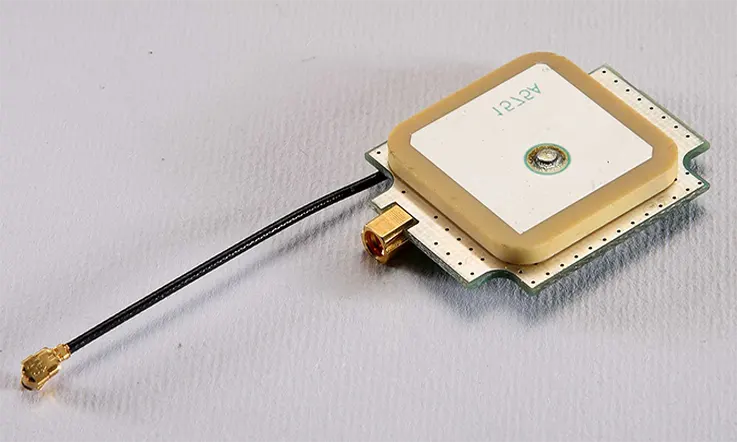
A GPS PCB relies on various protocols, including UART, I2C, and others, to establish communication between the GPS module and a controller or computer.
What Is the Base Material of GPS PCB?
In Printed Circuit Board (PCB) manufacturing, a coating is typically applied to the base material, which is also known as the substrate. This is done to differentiate it from the various layers and components that will be added onto it.
A GPS PCB is comprised of two primary components, namely the GPS module and the PCB. A GPS System uses the four following materials as the base material.
● Aluminum.
● Glass.
● Ceramic.
● Polyvinyl chloride.
A PCB has these as the base material;
● Prepreg.
● Laminate.
● Foil of copper.
● Soldermask.
● Nomenclature.
● Surface Finishing.
How Many Layers Can GPS PCB Have?
As a GPS PCB manufacturer, we understand the importance of using high-quality PCBs that are specifically designed to meet the unique demands of electronic devices that utilize GPS modules. Our multilayer PCBs have the capability to support up to 30 layers, offering exceptional flexibility necessary to perform a wide range of tasks.
The inherent electrical qualities of multilayer boards make them ideal for applications that require fast speed, high capacity and compact design with greater assembly density. Our boards have the capability to decrease or eliminate the need for numerous connectors when compared to traditional PCBs, simplifying the manufacturing process and significantly reducing the board’s overall weight.
We have noticed that GPS modules function exceptionally well on our multilayer boards, without any reported issues. As a result, we recommend our multilayer PCBs as the preferred option for incorporating GPS modules into electronic circuits. Our commitment to excellence in manufacturing ensures that our products meet the highest quality standards and are tailored to individual customer requirements.
Common Design Guidelines for GPS PCBs
Designing an efficient GPS PCB requires adherence to several guidelines to enhance performance and electromagnetic compatibility.
● The initial stage involves placing the GPS antenna carefully to achieve superior radiated performance.
● When designing for multiple antennas, reducing antenna crosstalk is critical. Shielding the GPS antenna traces minimizes noise levels and crosstalk while shielding the power supply and key components enhances GPS PCB efficiency.
● A multiple-layered GPS PCB design demands maintenance of antenna transmission line impedance at 50 Ω.
● Routing should also minimize excessive capacitance while avoiding noisy routings and insertion loss from long routing.
Consistent reference ground planes, both above and below GPS routing, should be ensured. In the logistics industry, GPS PCBs provide crucial location details that improve customer support and trust.
Cadence software tools provide a comprehensive system analysis and simulation toolset to develop GPS PCBs for excellent radiated performance and precise location tracking.
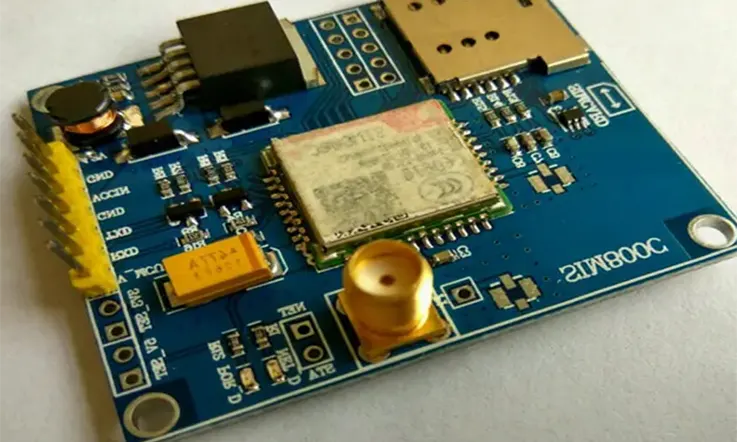
Factors to Consider in Choosing GPS PCB Board
There are several factors to consider when choosing a GPS PCB board, including:
● Accuracy: The PCB board should offer high accuracy to enable precise positioning and navigation.
● Signal Sensitivity: The GPS PCB board should be capable of picking up weak signals from GPS satellites to provide accurate location data even in challenging environments.
● Cost: The cost of the GPS PCB board should be evaluated based on the features and performance required by the application.
● Power Consumption: The GPS PCB board should consume minimal power to extend battery life.
● Size and Form factor: The size and form factor of the GPS PCB board should be evaluated based on the application’s design constraints.
● Integration with other components: The GPS PCB board should be compatible or easily integrated with other components on the PCB.
● Electromagnetic Compatibility (EMC): The GPS PCB board should provide comprehensive EMI/EMC protection to ensure reliable and accurate positioning and navigation even in the presence of electromagnetic interference.
● Certification: The PCB board should be certified according to industry standards such as Federal Communication Commission (FCC), Industry Canada (IC), or Reducing Hazardous Substances (RoHS).
How to Use GPS Integration into PCB?
Integrating GPS technology into printed circuit boards (PCBs) involves the placement of a GPS receiver and antenna on the board, as well as ensuring the power supply is appropriate for GPS components, and considering electromagnetic interference (EMI) and electromagnetic compatibility (EMC) issues. The placement of the antenna is particularly critical to ensure an optimal signal reception. Once integrated, GPS-enabled PCBs can be used in a variety of applications, including navigation systems, smartphones, automotive, and military equipment.
● GPS Antenna Placement
GPS antenna placement is a critical consideration when integrating GPS technology into a printed circuit board (PCB). The antenna should be positioned in a clear line-of-sight to the sky, away from obstructions that can block signals such as metallic components or other electronic devices. Additionally, the antenna should avoid interference from other components on the PCB such as RF or electromagnetic components.
The optimal placement of the GPS antenna also depends on the application and design requirements, as well as the type of antenna being used. Some antennas may need to be positioned at particular angles or orientations to achieve the best results. Careful placement of the antenna during the design phase is crucial to ensure adequate signal strength and accuracy for the GPS system.
● GPS Receiver Placement
GPS receiver placement is another crucial consideration when integrating GPS technology into a printed circuit board (PCB). The GPS receiver should be placed close enough to the antenna to minimize signal attenuation and signal loss. At the same time, the receiver must be positioned away from sources of interference such as other electronic components or RF signals.
Furthermore, GPS receivers tend to consume more power compared to other components on the PCB, so the power supply should be designed to provide steady and sufficient power to the GPS receiver consistently.
The placement of the GPS receiver should also take into account the overall size and shape of the PCB, as well as the operational requirements and design constraints of the device. Proper GPS receiver placement is essential to ensure accurate and reliable GPS data acquisition.
● Power Supply Considerations
When integrating GPS technology into a printed circuit board (PCB), power supply considerations are crucial. GPS receivers require a steady and adequate power supply to operate effectively. Power quality, voltage, and current stability must be maintained within specific tolerances for optimal GPS functionality and longevity.
A common practice is to add filtering components in the power supply circuit to minimize any potential sources of noise and ripple effect on the GPS module.
Designers must evaluate the power requirements of the GPS components and ensure that the PCB design and power supply circuits can meet those requirements adequately without voltage drops or power surges that would affect their accuracy. Power supply design should be integrated with the rest of the PCB circuit to minimize any potential effects of electromagnetic interference on the GPS module.
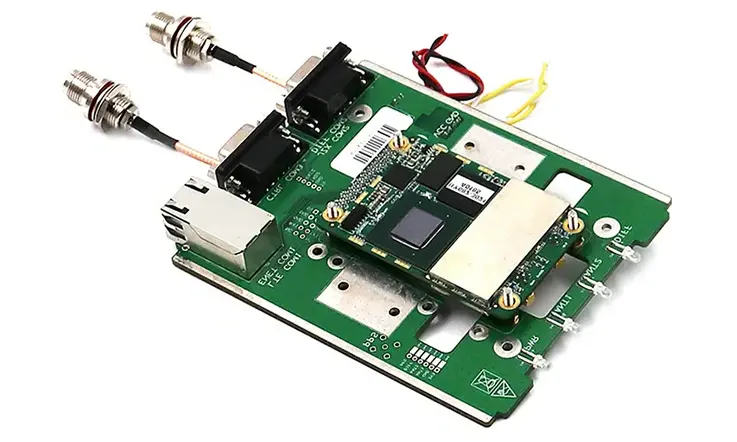
● EMI and EMC Considerations
EMI (Electromagnetic Interference) and EMC (Electromagnetic Compatibility) considerations are crucial when integrating GPS technology into a printed circuit board (PCB). GPS receivers are sensitive to electromagnetic interference, and EMI can affect signals, cause noise, and degrade GPS performance. EMC is the ability of an electronic device to operate correctly within its electromagnetic environment, and this should always be taken into account too.
PCB designers should evaluate the potential sources of EMI, including other electronic devices on the board or nearby, and then implement techniques to mitigate them such as proper shielding, separating GPS components from other electronic components, grounding, and properly filtering power supplies.
Testing for EMC compliance is also essential to ensure that the integrated GPS hardware and circuit are working within acceptable parameters and limitation, defined by worldwide standards for electromagnetic emissions and radiated susceptibility.
Benefits of integrating GPS technology into PCB
Integrating GPS technology into PCBs offers several benefits, including:
● Accurate positioning and navigation:GPS technology enables precise positioning and navigation, allowing for more efficient and effective systems in a variety of industries.
● Improved efficiency and productivity: GPS technology allows for real-time tracking and monitoring, leading to improved efficiency and productivity in industries such as transportation, logistics, and construction.
● Increased safety and security: GPS technology can be used to improve safety and security, enabling real-time tracking of vehicles and assets and helping prevent theft and unauthorized access to sensitive areas.
● Enhanced user experience: GPS technology can improve user experience in applications like maps, ride-sharing apps, and social media platforms.
● Precision Agriculture: GPS-enabled PCBs are transforming modern agriculture, enabling precision farming techniques to optimize crop yields and reduce waste.
● Lower costs and faster production: Integrating GPS technology into PCBs allows for faster production times and lower costs, reducing the time and resources required to create specialized positioning and navigation systems.
Overall, the integration of GPS technology into PCBs offers numerous benefits, improving accuracy, efficiency, safety, productivity, and user experience in a variety of applications across various industries.
Applications of GPS-enabled PCBs
GPS-enabled PCBs have various compelling applications, including:
● Navigation Systems: GPS-enabled PCBs are widely used in navigation devices such as car navigation systems, drones, and aircraft guidance systems.
● Smartphones: GPS-enabled PCBs are a fundamental component of location-based services such as maps, ride-sharing apps, and social media platforms.
● Logistics and Fleet Management: GPS-enabled PCBs can help track and manage fleets of vehicles used in industries such as transportation, logistics, and construction.
● Military and Defense: GPS-enabled PCBs are used in various military and defense devices such as communication equipment, UAVs, missile guidance, and security systems.
● Agriculture: GPS-enabled PCBs are used for precision agriculture to monitor and optimize crop yields by sensing variables such as soil condition, temperature, and moisture.
● Wearable Technology: GPS-enabled PCBs are used in smartwatches and fitness trackers to track user locations and analyze movement data, enabling fitness tracking and location-based services.
Future of GPS-Enabled PCB Integration
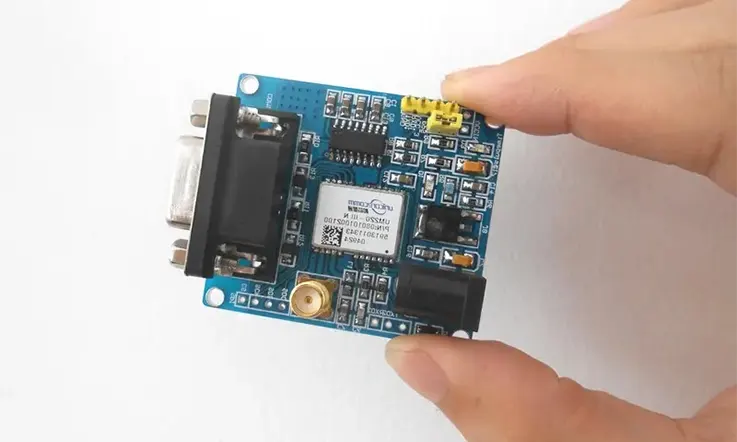
The future of GPS-enabled PCB integration looks promising. We can expect to see GPS technology continue to advance, with improvements in accuracy, sensitivity, power consumption, and size.
GPS-enabled PCBs are likely to become more prevalent in a variety of industries where accurate positioning and navigation play a vital role, such as transportation, agriculture, logistics, and defense. The integration of GPS technology into wearable devices such as smartwatches and fitness trackers is also expected to continue to grow.
With the rise of the Internet of Things (IoT), GPS-enabled PCBs will play a critical role in enabling connected devices to communicate with each other, share data, and operate effectively within the context of their environments.
Overall, the future of GPS-enabled PCB integration looks promising and will continue to provide significant benefits across various industries and applications.
Conclusion
GPS-enabled PCBs have become essential components in various industries, including transportation, agriculture, military and defense, and wearables. A well-designed GPS PCB board must consider crucial factors such as accuracy, sensitivity, power consumption, size and form factor, integration compatibility, EMI/EMC protection and certification.
When designing or choosing a GPS PCB board, it is essential to consider the specific application’s requirements and choosing a PCB manufacturer with experience and expertise in the design and production of GPS PCB boards. A reliable GPS PCB board will provide consistent and trustworthy positioning and navigation data, contributing to more efficient and effective systems in various industries.
In a word, JarnisTech is a top-notch PCB manufacturing company that delivers exceptional GPS PCBs for various projects. We pride ourselves in providing the best GPS PCB solutions in China to meet your needs. Our team is dedicated to creating superior quality PCBs that will meet or exceed your expectations. If you require assistance with your projects, we encourage you to reach out to us, and we will be thrilled to help you out. Our expertise and focus on delivering outstanding results make us the perfect partner for your GPS PCB needs.
Related Posts:
1. Exceptional Manufacturer of Antenna PCBs
2. JarnisTech – High Quality Bluetooth PCB Manufacturer
3. FAQ Guide About Wireless PCB
4. Why Carrier PCB in Telecommunication Is So Useful?
6.The Evolution of 5G PCB Technology: Transforming the Telecommunication Industry
